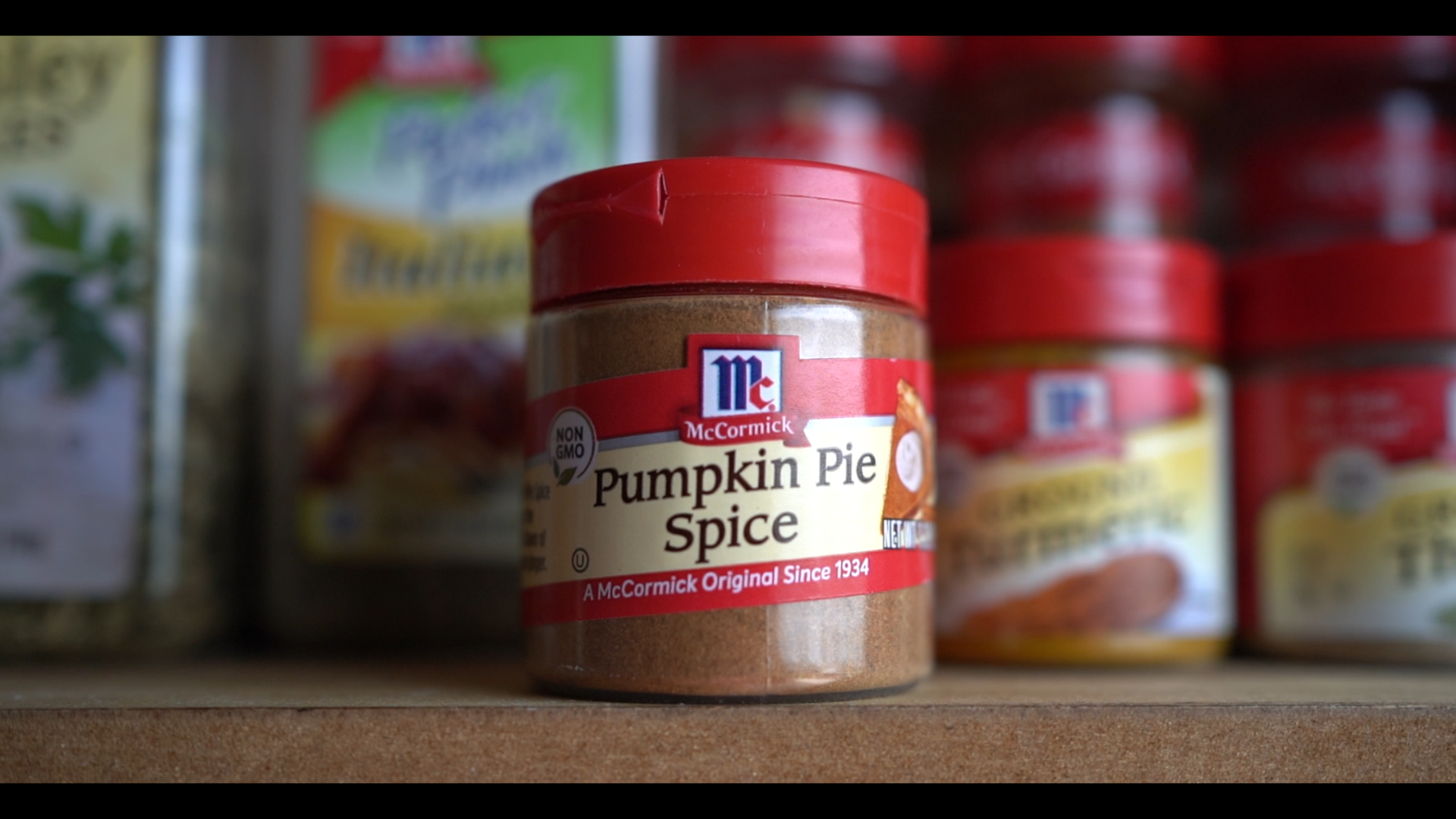The fall season is here, and with it, so is the return of pumpkin spice! Many people are making pumpkin-spiced flavored items, and with the high demand comes many wondering what goes into the popular blend... and if it has any pumpkin at all.
THE QUESTION
Is there any pumpkin in pumpkin spice?
THE SOURCES
- Ethan Frisch, spice expert and founder of Burlap and Barrel, a sustainable spice company
- Lisa Andrews, licensed dietician and nutritionist and CEO of Sound Bite Nutrition
- An official statement from McCormick & Company
THE ANSWER
WHAT WE FOUND
Whether you love it or hate it, pumpkin spice season is back in full swing.
So… what is actually in the pumpkin spice blend?
“There's no pumpkin content in pumpkin spice on its own,” Ethan Frisch, a spice expert and owner of sustainable spice trading company Burlap and Barrel. Instead, it’s a blend of typically four to five other spices you probably have in your cabinets: cinnamon, ginger, cloves, nutmeg and allspice.
“Pumpkin spice has a confusing name, obviously, because there is no pumpkin in the spice. But it's a blend of different spices that historically were used with pumpkin and pumpkin pies or pumpkin puddings. It varies a lot depending on who's making it but it's usually kind of warm, rich spices like ginger, cinnamon, nutmeg, things like that. Pumpkin spice may be added to other things; those other things might have pumpkin in it,” Frisch said.
It is still possible the pumpkin spice latte drink you order might in fact contain pumpkin. It depends on where you’re getting it from, as some coffee shops including Starbucks have added pumpkin puree in their blends.
But we can VERIFY that there is no pumpkin found in pumpkin spice.
Lisa Andrews is a registered dietician and founder of Sound Bite Nutrition, which helps break down scientific ingredients in complicated foods in easy ways for people to understand. She agrees that the most popular recipes for pumpkin spice contain a combination of different ingredients, the majority of which is cinnamon, but it does depend on what brand you buy.
As for why the pumpkin spice flavor is so popular, Andrews attributes the demand to two factors: limited availability and a draw towards comfort.
“One of the reasons is because it is seasonal, so it's sort of that psychology of the limited time only. So I think of things like the McRib... get it now because it's going away,” Andrews told VERIFY. “The other thing is that spice combination, and that blend was used very early on in American culture. So we sort of see it as comfort food, and there's just sort of this rich history of those particular spices being used, particularly around holiday time.”
HISTORY OF PUMPKIN SPICE
The pumpkin spice blend dates back far before the #PSLs you see across social media. It was originally used as a way to help assist baking needs. According to spice giant McCormick & Company, the group first introduced a commercial Pumpkin Pie Spice to the U.S. back in 1934 with the original purpose to flavor pumpkin pie all in one container, rather than bakers needing to get each individual flavor.
“Up until the 1930s, making pumpkin pie involved roasting and straining pumpkin,” a spokesperson for McCormick explained. “Then canned pumpkin was introduced, making preparation much easier and thus increasing the desire to make and eat pumpkin pies.”
But the history of mix spiced blends goes long before that. Some of the most popular ingredients in pumpkin spice, like ginger and cinnamon, have an extensive history in American food, being brought to the country by Europeans who used spice blends to save time while cooking. Some of those include kitchen pepper, a very popular seasoning and spice blend in the U.S, seen through the late 1700s and 1800s. Frisch told VERIFY researchers kitchen pepper might have been what inspired the idea for pumpkin spice.
“Kitchen pepper was probably the precursor to what we know today as pumpkin spice, but was usually a savory blend, something that you'd use with salt on meat or on veggies, stews, things like that,” said Frisch. “This transition of pumpkin and this associated spice blend to being a dessert, being a sweet blend is fairly recently.”
BOTTOM LINE
While the spice blend can be used in a variety of drinks and foods, which might have their own added pumpkin purees or twists, we can VERIFY that the pumpkin spice blend doesn't contain any pumpkin.
P.S. If you’re looking for an excuse to treat yourself this fall, our researchers said ingredients inside pumpkin spice like cinnamon and allspice actually do have some antibacterial properties and some health benefits like blood sugar management. But everything is in moderation.
“Cinnamon and allspice contain different antioxidant properties that help to reduce the risk of disease,” Andrews told VERIFY. “They also have some antibacterial properties, so they may be beneficial to your gut health, and ginger itself is used frequently in pregnant women because it has some anti nausea or antiemetic effects.”

